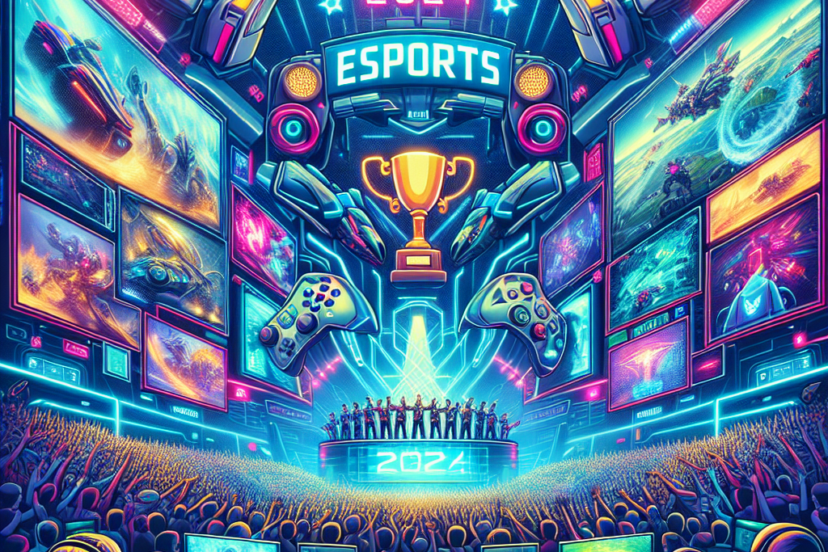The Evolution of Sonic: Speeding Through Gaming History
The Genesis of Sonic the Hedgehog
Creating a Cultural Icon
Back in the early 1990s, Sega was struggling to compete with the popularity of Nintendo and its star mascot, Mario. In response, the company sought to create a character that would resonate with the youth of the time. The brainchild of the Sonic franchise was Naoto Ohshima, a designer who envision a blue anthropomorphic hedgehog. The team aimed to create a character that was fast, cool, and rebellious, which were qualities appealing to their target demographic.
The design team, including artist Yuji Naka and composer Masato Nakamura, worked to flesh out the gameplay mechanics around Sonic. The iconic blue color was a direct nod to Sega’s logo, while his red shoes were inspired by Michael Jackson’s ‘Bad’ album cover. Sonic was officially launched in 1991 with the release of “Sonic the Hedgehog” for the Sega Genesis, quickly establishing himself as a key figure in gaming.
Gameplay Mechanics and Design
What set Sonic apart from other platformers during that era was his unique gameplay. Instead of emphasizing jumping and exploration like Mario, Sonic focused on speed. Levels were designed with loops, ramps, and speed boosters, allowing players to accelerate through the world at a breakneck pace. The introduction of the spin dash also added dynamism to the gameplay, enabling Sonic to gain momentum and defeat enemies with ease.
The vibrant 16-bit graphics and catchy music added layers of charm to the game. It was not just about the mechanics; it was an experience that players could immerse themselves in. The combination of speed and stunning visuals appealed to a generation, making Sonic a household name almost overnight.
The Rise of Sonic’s Empire
Sequels and Expansions
Sonic’s success paved the way for a franchise that quickly expanded. “Sonic the Hedgehog 2,” released in 1992, introduced Tails, Sonic’s fox sidekick, and introduced a two-player mode that allowed friends to experience Sonic’s adventures together. It refined the gameplay elements of the first game while adding new mechanics, such as the spin dash that became a staple of the series.
“Sonic CD,” released in 1993, took a bold step into the realm of time travel, allowing players to explore past and future versions of the same levels. The game’s innovative design and solid animations were complemented by its incredible soundtrack. The animated cutscenes, a rarity at the time, added an exciting cinematic element to the gameplay, showcasing Sonic's narrative potential.
Battle Against Rivals
As Sonic gained momentum, he faced off against various mascots, most notably, the rise of the PlayStation and its character, Crash Bandicoot. Sega responded by releasing “Sonic 3” in 1994. This installment featured enhanced graphics, a more sophisticated level design, and high-stakes gameplay. The iconic collaboration with Michael Jackson on the soundtrack further solidified the game's cultural relevance.
Amidst this competitive landscape, the “Sonic & Knuckles” game introduced Knuckles the Echidna as a playable character, adding a new layer of strategy to the series. His ability to glide and climb walls gave players new ways to navigate the levels. This move emphasized the diversity of gameplay within the franchise, allowing different characters to appeal to various player styles.
Transition to 3D
Embracing New Technology
The late 1990s marked a significant technological shift in gaming. The transition from 2D to 3D gaming posed a challenge for the Sonic franchise, which had established its identity based on speed and clean graphics. In 1998, Sonic Team released “Sonic Adventure” for the Sega Dreamcast, taking a bold leap into a fully rendered 3D world.
The introduction of a free-roaming 3D environment allowed players to explore Sonic’s world in new ways. The game retained the core mechanics of speed while also introducing new gameplay elements like Treasure Hunting and Racing through the incorporation of various characters' unique abilities.
Expanding Sonic’s Universe
“Sonic Adventure” also deepened the narrative aspect of the franchise. For the first time, Sonic had a multi-layered plot featuring different playable characters, including Tails, Knuckles, Amy Rose, and even Big the Cat. Each character had distinct abilities and storylines, competing to find the Chaos Emeralds and defeat the monstrous creature, Perfect Chaos. This approach enriched the overall gameplay and drew players into the Sonic universe.
Additionally, the iconic “Chao Garden” feature allowed players to engage in mini-games, raising virtual creatures in an adorable, interactive environment. This concept brought a new level of depth and player investment into Sonic’s world, winning over fans of all ages.
The Early 2000s: Peaks and Pits
As Sonic flourished in 3D gaming, the new millennium brought both highs and lows. While “Sonic Adventure 2” was released in 2001 to critical acclaim, praised for its gameplay, storyline, and soundtrack, subsequent titles began to stumble. Games like “Sonic Heroes” and “Sonic the Hedgehog” (2006) struggled with controls and design, leading to a divided fanbase and detracting from Sonic’s once-dominant position in gaming.
From 3D Struggles to a Return to Roots
After several titles failed to resonate, Sonic Team responded in 2006 with a soft reboot titled “Sonic the Hedgehog,” hoping to return to the franchise’s core appeal. Unfortunately, it faced significant criticism regarding its gameplay mechanics and optimization, illustrating the challenges of transitioning beloved characters into an evolving gaming landscape.
Recognizing the need to reassess its approach, Sonic Team took a step back and reimaged the series. The “Sonic Colors” game in 2010 brought a fresh perspective with vibrant levels, power-ups, and a more linear design reminiscent of the classic games, allowing Sonic to regain some of his former glory.
Reinvigorating the Brand
Modern Sonic: New Beginnings
The 2010s saw a significant shift in how the Sonic franchise approached game design. With the release of “Sonic Generations” in 2011, Sonic Team fused classic and modern gameplay styles, allowing players to experience 2D and 3D gameplay in a single title. The game was celebrated for its nostalgia-inducing levels from earlier Sonic titles, reimagined with updated graphics.
Mobile gaming also welcomed Sonic with titles like “Sonic Dash,” tapping into a growing market for casual gaming experiences. This marked a turning point, as Sonic reached a new audience accustomed to mobile engagement.
Collaboration and Crossovers
Additionally, the rise of collaboration in gaming gave Sonic a prominent place in various crossover titles. He became a playable character in popular franchises such as “Super Smash Bros.” and iconic racing games like “Mario & Sonic at the Olympic Games.” These crossovers not only allowed Sonic to maintain his relevance but also to introduce him to fans of other beloved franchises, bringing fresh fans into the Sonic universe.
The Sonic Movie Phenomenon
Shifting to the Big Screen
In 2020, the long-anticipated “Sonic the Hedgehog” movie made its debut, encapsulating a broader effort to rebrand Sonic for a new generation. Initially met with mixed responses, the film’s initial character design drew significant backlash from fans. Following substantial public feedback, the character was redesigned, leading to a successful reception upon the movie’s release.
The film did not just capture the nostalgic essence of the games but created a new storyline that blended the character’s background with contemporary humor, making it relatable to various audience demographics. This marked a successful re-entry into pop culture for Sonic as a franchise, paving the way for a sequel.
The Future of Sonic
The Sonic franchise continues to adapt and grow. New releases such as “Sonic Frontiers” have explored open-world concepts, capturing the spirit of exploration while bringing Sonic into a more expansive and immersive landscape. Regular updates and collaborations continue to breathe new life into the series.
As technology evolves, so too does Sonic’s universe, ensuring that both longtime fans and new enthusiasts can enjoy everything that this iconic character has to offer. From fast-paced platforming to interactive storytelling and cinematic ventures, Sonic the Hedgehog remains a beloved figure in gaming history.
With new games, animated series, and ongoing community engagement, the blue hedgehog shows no signs of slowing down, proving that in the race of video game history, Sonic will always find a way to speed ahead.




